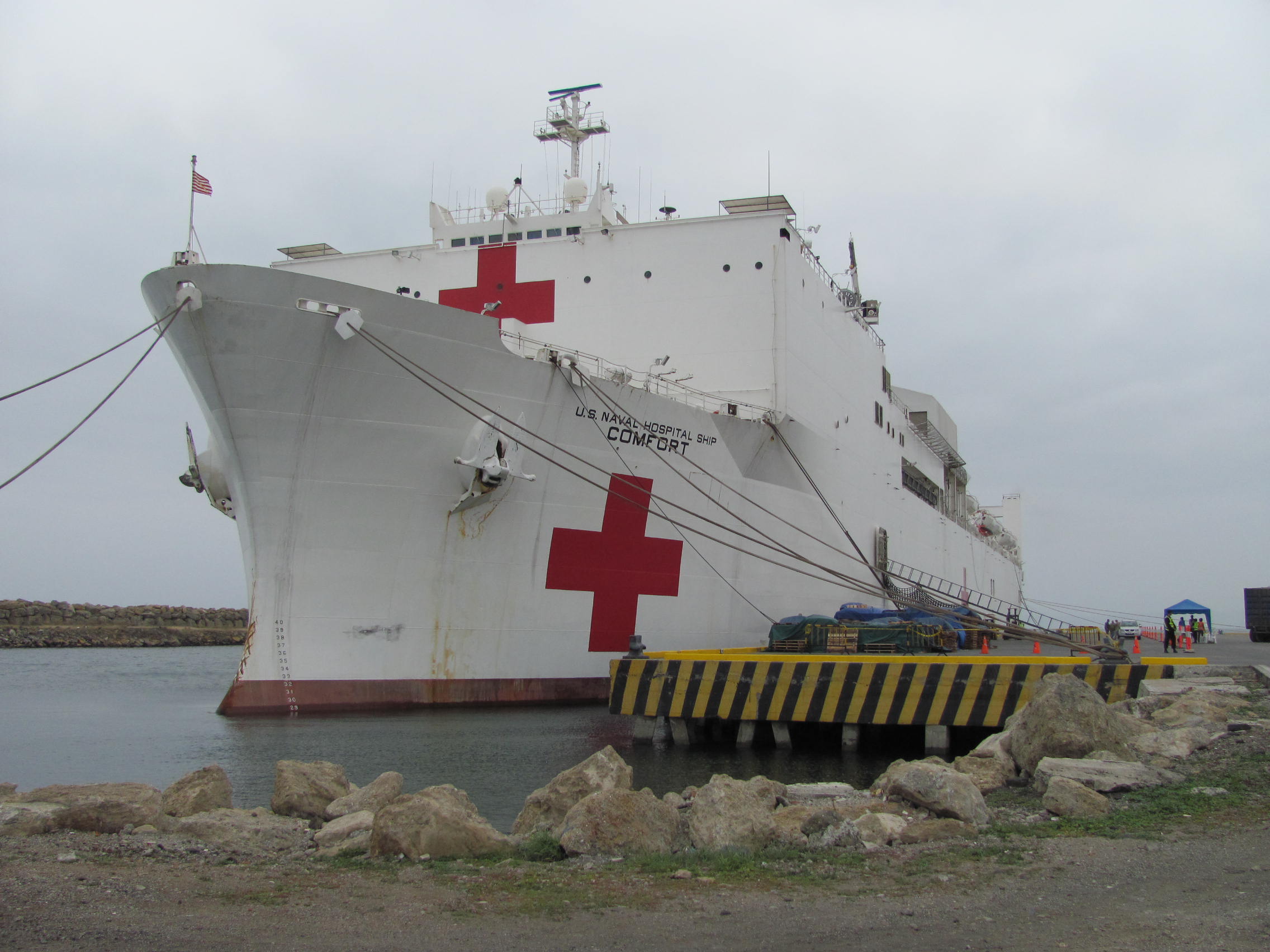Living on the USNS Comfort
Photo credit: Mormon Newsroom. The USNS Comfort
When people hear about my experience volunteering as a nurse on the USNS Comfort in 2011, they often wonder what it was like. I helped a little boy who was burned in a house fire to get the necessary amputation surgeries to prevent future infection. I spoke with people who said that $5 was too much to spend for them to travel to get additional medical help. I saw large inoperable tumors on patients who we couldn't provide help to. I also saw the bright smile on a person's face as they received their very first wheelchair; their sons no longer had to carry them everywhere that they went.
USNS Comfort
The crew consisted of mainly military personnel that had been deployed to this mission. There were non-governmental organizations (NGOs) which provided volunteers as well. These included nurses, physician's assistants, doctors, dentists, dental hygienists, translators, public health experts, and more. I volunteered through Latter-day Saint Charities which is the charity organization for the Church of Jesus Christ of Latter-day Saints. There were other religious charities and educational organizations on board as well.
We went to nine different countries throughout Central and South America including Jamaica, Peru, Ecuador, Colombia, Nicaragua, Guatemala, El Salvador, Costa Rica, and Haiti. In each country we would perform surgical screenings and then perform the surgeries on the hospital ship throughout the two week stay. In addition to this, we provided education courses for the locals, participated in charity events, and helped at the clinics we set up for the local population.
How did the hospital run?
The ship is set up as similarly to a hospital as it could be. It has multiple operating rooms, recovery rooms, post-op wards, pharmacy, laboratory, radiology, and more. Patients would come in for procedures that (for the most part) had a shorter recovery time. If the recovery time were longer, they would be the first surgeries performed when we entered a new country. Surgical procedures included hysterectomies, cleft palate repairs, cataract removals, nasal septum repairs, tonsillectomies, amputations, and many other surgeries. These were at absolutely no cost to the patient.
What did the nurses do?
There were many nurses on board the USNS Comfort. Everyone had primary and secondary responsibilities based on where they were assigned to work.
USNS Comfort Surgical Nurse
There were nurses assigned to work in the casualty receiving area (basically the pre-op area for surgical patients), the operating room, and the post-op wards. I was assigned to the pre-op area. We placed IVs, drew labs, and went through the orders to be sure they were completed prior to surgery. My favorite thing about working in this area was the I got to see patients before they underwent their surgeries. There were two little boys with cleft palates whose mothers were apprehensive and nervous about the surgeries for their little babies. When the mothers and babies left after surgeries, the little boys had a complete smile and the mothers were beaming from ear to ear.
Nurse Educator
Photo credit: Mormon Newsroom. Nicki Broby helped assist this young woman to get glasses. A seemingly simple task, but one that severely changed her life.
A couple times in each country, we had the opportunity to provide education to the local citizens about different medical topics. Classes included mainly medical and public health courses. The main class that I helped to teach was called "Helping Babies Breathe." The purpose of this class was to teach midwives what to do when they were in a home and a baby was born not breathing. We talked about stimulating the baby, oral suctioning, and even using a bag-valve-mask to initiate breaths. We then provided them with a travel kit with the necessary medical supplies to take with them to deliveries. When I got home from volunteering, my dad was talking with me and said, "Do you realize that you have helped to save, potentially, thousands of babies lives?" You never really know the impact that you have until you step back and think about it.
Clinic Nurse
Clinics were set up on shore that included a variety of services: dentistry, pediatrics, optometry, and general medicine. People would wait in line for hours to be seen by a provider. They could be seen by one specialty and then would have to wait again if they wanted to be seen by a different provider. This made the process more fair for the general population. Nurses would assist doctors with minor procedures, help patients through the process, and organize the lines of people waiting. Many of the pediatric patients would receive anti-parasitic medications. There were people who came in for dental cleanings and teeth extractions. Many people came in with common ailments that we see in the United States hoping for a cure.
My Perspective
This was one of the most amazing experiences I have ever had. It opened my eyes to the poverty that exists in other countries and how we, as nurses, can help to educate and change people's lives. Volunteering as a nurse has not only changed the lives of those I came in contact with, but it changed my life for the better as well.
There is something very sweet about giving of your time simply because it's what you feel like you need to do. I didn't get paid to go. I ate the Navy food (which we nearly ran out at certain times) and slept in Navy bunk beds. I worked long hours and got horrible food poisoning at one point. Yet, despite this, I had the most rewarding nursing experience of my entire life. When you lose yourself in service, you are able to find yourself in different ways than you would've ever thought possible.
Photo credit: Mormon Newsroom
Other relevant articles include:









